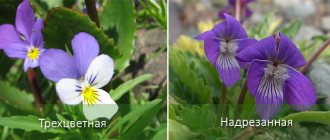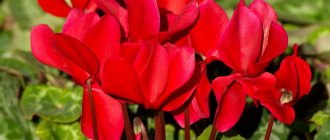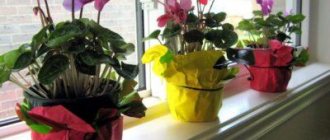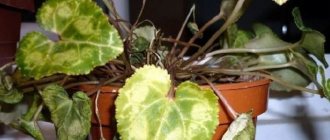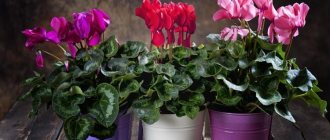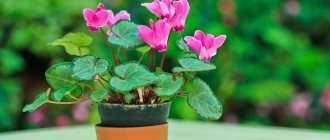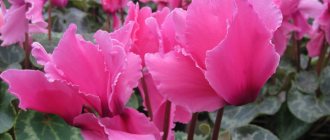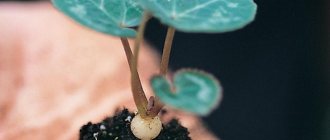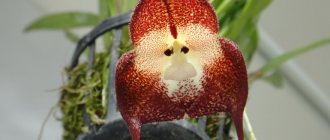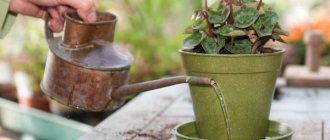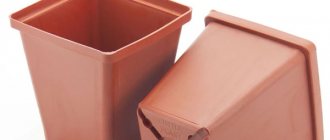It’s hard to even imagine our life without indoor flowers. They are beautiful and can delight us with their appearance all year round.
But deciding on them is not easy. It is important that you are able to create acceptable conditions . So that they bloom well. This is why many gardeners definitely want to have violets in their flower collection :
- Many varieties with a variety of flowers and their colors;
- The small size allows you to place more than a dozen flower pots even in an apartment;
- They bloom for a long time;
- And the price allows it.
Just which one to choose:
- Violet (Viola). Violet family (Violaceae). It has a long history: In ancient civilizations (Greece, Rome) it was a revered gift;
- Josephine Napoleon's favorite flowers were violets;
- They can be found in many parts of the world. Mainly places with a temperate climate. Of the more than 700 species, many have long been growing in the territory of the former Soviet Union. And not just plain purple ones;
- Many new varieties with amazing flowers have been bred;
- They decorate garden plots, city boulevards and parks.
- What varieties have not been bred by breeders! It’s even hard to imagine their various colors;
- Representatives of the orchid family Lyubka bifolia and its relatives.
- Hesperis (Matrona's Evening);
Next, you will learn all about violets and cyclamen and how to distinguish them.
Description of alpine violet
Its other common name is cyclamen purple (European), and colloquially known as dryweed. This flower can be found along the entire Mediterranean coast and in the mountains of Northeast Africa. The plant loves cool weather and does not tolerate heat at all. Therefore, its life cycle is divided into two periods: rest and growth. In the summer, the alpine violet sheds its leaves and “falls asleep,” and in the fall the growing season begins. It blooms all winter - from October to March.
The buds of this plant have delicate oblong petals of white, purple and pink colors. Green leaves with silver patterns are shaped like a heart.
Kossky
The name of the species is associated with the island of Kos in the Aegean Sea. The flower also grows in the coastal and mountainous areas of Syria, Ukraine, Lebanon, Iran, Georgia and Bulgaria. Cyclamen begins to bloom in late winter or early spring. Leaves form in the last weeks of autumn, but sometimes this process shifts to winter. The shade of the leaf plates is determined by varietal characteristics. The leaves are both green and dark silver.
The palette of flowers is extensive. They come in red, purple, pink and white. The petals at the base have the most saturated shade.
In the photo below is the variety Cyclamen Kosskiy:
Cyclamen of Kos
Types of alpine violet
Alpine violet has more than 20 species. But due to the difficulties of care, only two are grown at home: Persian and purple.
| View | Description | Leaves | Flowers |
| Cyclamen persica | The perennial, up to 30 cm high, has a round fleshy root formation, 15 cm in diameter. It does not form daughter shoots. | Large, up to 14 cm in diameter, grow from a tuber, heart-shaped, dark green with a light pattern, red-brown petioles. | They have five pointed, curved petals, up to 5 cm long. Rich colors: white, pink, burgundy, purple, dark red. |
| Cyclamen purple (European) | A low plant 10-20 cm in height. Small tubers are entwined with root shoots. | Small - 2-4 cm, round. The upper part of the leaf is green with silver painting, the lower part is dark red. | Consist of five drooping petals of pink, rich crimson or purple. Cherry flower stalks. |
Persian
The plant is found in African and Asian countries, as well as in Western Europe. The flower tolerates growing well in regions with moderately cool winters, for example, in the northern regions of Italy. In addition, the flowering period occurs precisely in winter.
Persian cyclamen has heart-shaped leaves with a dark green color and a marbled white pattern. The floral palette includes white, pink, purple and red shades.
The tuber contains nutrients and beneficial substances that are necessary for the normal passage of the dormant stage. In the natural environment, these components allow the flower to endure a cold winter and bloom even under unfavorable weather conditions.
You can see what the Persian Cyclamen variety looks like in the photo below:
Cyclamen persica
Alpine violet: care at home
An unpretentious flower in natural conditions requires special attention when grown indoors. Only with the right approach, cyclamen will not die and will bloom for several months in a row.
| Flowering period | Rest period | |
| Location | During the winter months, plants are placed on western or eastern windowsills with good lighting. Or on shelves with additional lighting. | A darkened place in the garden or on the balcony. Better in the fresh air. Can be installed between window frames. |
| Temperature | The optimal temperature during this period is +17…+19 °C. The flower will perceive an increase to +25 °C as a signal for hibernation. | During this period, the plant does not react much to elevated temperatures. The coolness of the night on a loggia or balcony has a beneficial effect on bud formation. |
| Watering | It does not like dampness, so water it abundantly, but not often, preferably through a tray - this way the water does not get on the leaves and tubers. | Just lightly moisten the earthen ball with cold water, preventing the tubers from drying out and cracking. |
| Feeding | Only adult plants once every 2 weeks at the rate of 1 g/1 l. Any mineral potassium-phosphorus mixtures with a reduced amount of nitrogen are suitable. | Not produced. |
Reviews
Anna Vasilievna. “I received one flower as a gift on March 8th. But then I bought more. Different colors. It’s especially nice that it blooms when other flowers are resting. I don't see any problems with care. Even during the dormant period there was no complete fall of leaves. I don’t even try to figure out the varieties. It’s a little difficult for specialists too. They bloom incomparably."
Vasilisa. “Many people say that the flower is problem-free. But not for me. One froze during transportation home. And disappeared. The other bloomed for a couple of months after March 8th. I replanted it and all I see are new leaves. But I hope to grow flowers too. I'm probably not doing everything right. But I love him just the way he is.”
Igor. “Cyclamen blooms from spring to autumn to spring. Just. Otherwise, there are not enough colors against the backdrop of snow outside the window. They are also pleasing to the eye. And it’s easier to get along with them than with people.”
Transplantation and soil
Alpine violet is replanted during the hibernation period closer to autumn, when the buds of leaves appear on the bulb with roots. The size of the pot should be slightly larger than the diameter of the tuber with roots. Flowering does not occur in a large container.
Cyclamen persica
A layer of drainage is placed at the bottom, then the soil mixture is filled. To do this, mix peat, sand, garden soil and humus in equal proportions. Dried or rotten roots are removed from the surface of the rhizome and immersed in the ground. Persian cyclamen must be deepened by 2/3, and European cyclamen can be completely covered with earth. If propagation is planned, then before this the bulb is cut, leaving buds and roots in each part. The cut area is treated with coal.
To accelerate growth, the tubers are sprayed with special solutions and allowed to dry in the sun, but not in direct rays. Then they are rooted into the ground. After transplanting, the pot is placed in a cool, bright place. Before the first leaves appear, watering should be sparse.
When propagating by seeds, it is necessary to put the earthen mixture in a shallow container, deepen each grain by 1 cm and level it. Cover the top with a light-proof film and moisten the soil regularly. After 30-50 days, shoots will begin to appear.
Cyclamen Purple
Caucasian
A beautiful flower that is listed in the Red Book of the Krasnodar Territory and is under strict protection of government agencies. The height of Caucasian cyclamen does not exceed 20 cm. A large root system can be seen from under the ground.
During the flowering process, thin peduncles with flowers of different shades appear on a small plant: from white to dark pink. This happens in early April. At the end of this period, the seed capsule falls to the ground and a new cyclamen is formed from it. This determines the group growth of the species.
The photo below shows Caucasian Cyclamen:
Cyclamen Caucasian
Alpine violet: garden care
The ideal place for planting in the garden would be the crown of any tree or the base of a bush. This will protect the flower from excess moisture during rain and from direct rays of the sun. Cyclamen loves loose soil that allows water to pass through and does not retain. To do this, it is best to dig holes and fill them with a soil mixture of turf and leaf soil with the presence of crushed stone, which serves as drainage. In garden conditions, the tubers are deepened by 10 cm to prevent freezing during the cold period.
During flowering, alpine violet needs frequent watering. Moisture getting into the rosette of leaves leads to rotting of the plant. Dried buds and yellowed leaves are removed.
Before winter, cyclamen is covered with a thick layer of foliage. Such a blanket will prevent the flower from freezing and retain moisture in the soil.
Ivy-leaved
Ivy cyclamen is one of the most common species in mid-latitudes. Among plant growers it is called “Neapolitan”. The name ivy leaf is associated with the characteristic structure of the leaf blades: they are rounded with small notches, reminiscent of ivy leaves. The flowers are similar in shape to those of the European species, but have unusual horns at the base. Their color is represented only by pink shades.
The root system is superficial.
Cyclamen Ivyleaf
Diseases and pests
| Symptoms | Causes | Elimination |
| The leaves turn yellow during the growing season. | Dry air, high temperature, lack of watering. | Ensure regular watering, spray the space above the flower with a spray bottle, and put it in a cool, bright place. |
| Leaves and flower stalks rot, brown spots appear. | Excessive watering, water getting into the outlet and onto the tuber. | Remove the affected parts of the plant, dry it, sprinkle with coal. Replace the soil, ensure good soil ventilation. |
| Flowering stops, the tips of the leaves turn yellow. | Fungal infection. | Replace substrate. Treat the flower with Topsin-M. |
| White coating, dark spots on the leaves. | Gray rot. | Transplant the cyclamen into another pot, treat it with a fungicide, and limit watering. |
| Flowers and leaves are deformed and covered with white streaks. | Thrips infestation. | The plant is isolated and disinfested with Spintor, Fitoverm, etc. |
| The leaves turn yellow, become covered with a gray coating, and growth and flowering stop. | Infection with cyclamen or spider mites. | Treat with insectoacaricides: Danitol, Mavrik, Sumiton, etc. |
Reproduction
Cyclamen is propagated in the summer, after it has already bloomed. The plant is carefully removed from the pot and cut into sections. You need to make sure that a part of the root and a bud remains on each division.
After this procedure, the tubers are thoroughly dried in a dark place. The cut areas should be treated with an antiseptic, such as charcoal. After drying, the separated parts are planted in small pots.
Mr. Summer resident recommends: medicinal properties of alpine violet
The healing qualities of cyclamen have been used for several centuries. Its tubers contain substances that help fight nasal polyps, sinusitis and sinusitis. Baths with decoctions relieve arthritis pain. Alcohol tinctures from alpine violet bulbs are used for rheumatism, gout, intestinal disorders, and migraines.
Sprays containing an extract from the plant's rhizomes have an antiseptic and antimicrobial effect. In folk medicine, to remove pus from the sinuses during acute inflammation, fresh juice is prepared from crushed tubers and 1-2 drops are dripped into each nasal passage just once. This is enough for the discharge of pus to begin within half an hour. Failure to comply with the dosage can cause an allergic reaction and poisoning, because cyclamen is a poisonous plant. To avoid this, all medications based on it are used on the recommendation of a specialist.
European
In nature, the species grows in Central Europe. European cyclamen belongs to the group of evergreen perennials with a flat-round tuber shape and one growing point. During development, the tuber undergoes deformation and forms thick shoots with their own growth points.
The basal leaves are silver-golden in color and heart-shaped with a characteristic point at the apex. The reverse side of the leaves is greenish-purple.
Cyclamen european
What is remarkable about cyclamens?
The first indoor cyclamens were brought to Paris around 1620 from the territory of Persia (modern Iran). The strange “Persian” flowers aroused great admiration and, after the “conquest” of France, conquered other countries. The color of the flowers of the original species of Persian cyclamen (Cyclamen persicum) is pink, while in modern hybrids it ranges from pure white to carmine red.
The European cyclamen, known as the Alpine violet (Cyclamen purpurascens, syn. Cyclamen europaeum), occurs wild in the Alps. Cultural forms in warm countries are grown in gardens, in more severe climatic conditions - as potted plants. The modern alpine or mountain violet is not the ancestor of the first cultivated forms.
The indoor plant cyclamen was popular until the end of the last century, then it gave way in the hearts and collections of gardeners to orchids and other novelties. Now this flower is experiencing a renaissance, coming back into fashion thanks to modern hybrids and varieties, offering incredibly attractive new items.
Their petals are single-color or two-color, fringed or wavy. The flowers are arranged strictly vertically or hang down like bells. Hybrids of miniature (mini) and medium (midi) sizes have been created.
Distribution area
Mountain violet grows in degraded floodplain forests (mainly oak forests), floodplain tall grass meadows, among shrubs, in clearings, forest edges, and mountain lawns.
The plant prefers fertile, well-drained soils and does not tolerate direct sunlight, hiding in the partial shade of taller plants.
Currently, it is found in small groups, more often as single specimens, scattered over a large area of the southern part of the tundra zone, the forest belt of mountain systems and the forest belt.
The plant was discovered in the countries of Eastern and Central Europe, Scandinavia, the Mediterranean, in the Caucasus, Western Siberia, Central and Asia Minor.
Adaptation
If the next day after appearing in a new home, purchasing it or receiving it as a gift, the cyclamen drops its leaves and flowers, do not panic and make unnecessary efforts aimed at “awakening” the plant. This is a natural behavior caused by stress due to a change in habitat. You need to wait some time for adaptation to take place. It is enough to provide only the appropriate conditions:
- The place should be cool and well lit by scattered rays of the sun.
- If the substrate is dry, you should slightly moisten the soil using bottom watering through a tray.
There is no need to feed for the first couple of months - it is not known when fertilizers were applied and whether this happened. Alpine violet purchased in a store will be accurately seasoned with a mineral complex.
How to choose a healthy plant in the store
It is customary to buy a colorful handsome man not only for yourself, but also as a gift. For a successful purchase, you must adhere to the following rules:
- the presence of a tuber peeking out of the ground;
- dense, healthy-looking bush, without signs of disease or insects;
- elastic, dense foliage, with a pronounced pattern on the surface.
It is better to refuse the purchase if the leaves are limp, soft and drooping over the sides of the container. Is mucus, cobwebs or plaque clearly visible on the bush? Such an “individual” will not survive transportation and the adaptation period. But they pose a great danger to other potted crops as a source of viruses and fungi.
